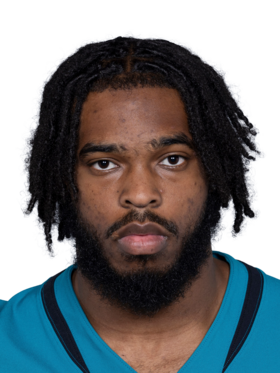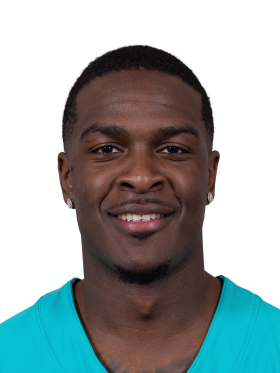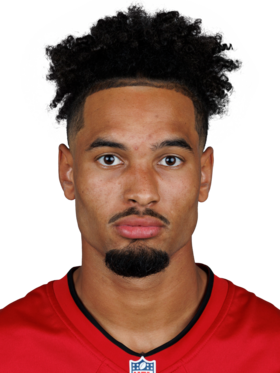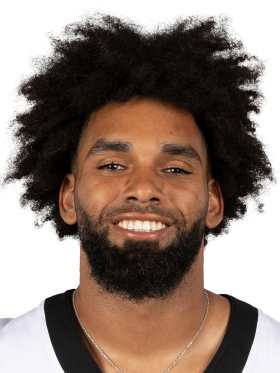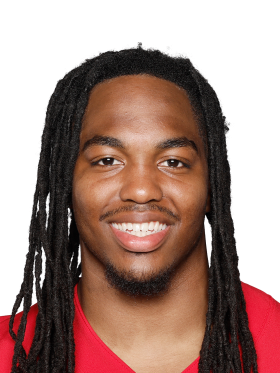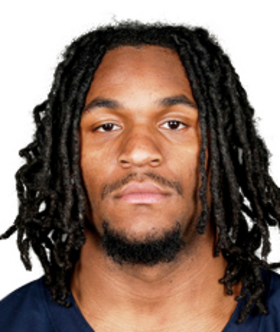

Ron Stewart said Mike Evans remains a strong selection in FFPC managed formats, pointing to Chris Godwin currently opening camp on the PUP list, which should funnel a hefty early-season target share to Evans. Stewart highlighted Evans’ unmatched consistency—nine straight 1,000-yard seasons—and noted that Tampa was willing to feed him manufactured touches last year, including 19 screens, to keep that streak alive. With the Buccaneers lacking established pass-catchers behind Evans and Godwin and Baker Mayfield showing a tendency to lock onto his primary read, Stewart expects Evans to post a safe weekly floor with spike-week upside. He believes age concerns are overstated and that the veteran profiles as a high-floor WR3 who can deliver WR1 weeks, making his ADP in the mid-fourth round an easy click when teams need reliable production.


Ron Stewart urged drafters to scoop rookie Bhayshul Tuten in the double-digit rounds as the most exciting swing in Jacksonville’s ambiguous backfield. At 5-9, 206 with reported 4.3 speed, Tuten checks the athletic boxes and dominated advanced metrics among the eight backs taken in the first four rounds: third in missed tackles forced per touch, second in yards after contact per attempt, second in chunk-run rate, third in breakaway rate, third in elusiveness rating, first in receiving fantasy points per snap, and tops in speed score. Stewart compared the situation to last year’s Bucky Irving league-winning surge under Liam Cohen, noting Tank Bigsby’s fumbling issues and Travis Etienne’s heavy workload leave a clear runway for a late-season takeover. With an Underdog ADP of 132 and often undrafted in home leagues, Tootin can ride the bench early while you gather data, then potentially explode when rookie backs traditionally hit their stride in November and December. Stewart called him his most-drafted RB and the perfect upside lottery ticket for best-ball tournaments and redraft benches alike.


Ron Stewart said De'Von Achane is the purest upside swing on the board because everything in his profile screams league-winner yet he is still available in the early second round of home-league drafts. In 11 games with Tua Tagovailoa last season Achane averaged 22.5 PPR points, out-scoring Saquon Barkley on a per-game basis while pacing for more than 100 receptions. Stewart highlighted Achane’s 12.6% explosive-run rate—better than 2023 leader Jahmyr Gibbs—and his record 7.8 yards per carry as proof the rookie-year efficiency can return if the Dolphins’ rebuilt interior line holds up. Even if the receiving volume regresses, Stewart projects 70-plus catches thanks to Mike McDaniel’s heavy pony looks and Achane’s wide-receiver-like usage. Stewart is not fading the back because of Tua’s concussion history, noting the quarterback has missed the same number of games over the last three years as Joe Burrow and Trevor Lawrence and that risk is already baked into Achane’s ADP. If the blocking improves and Miami’s offense rebounds, Stewart believes Achane owns true RB1-overall upside at a non-first-round cost.


Ron Stewart said Breece Hall is mis-priced at RB12 because every off-season variable that tanked his 2023 efficiency has flipped in his favor. Stewart expects Hall to function as the Jets’ No. 2 pass-catcher behind Garrett Wilson thanks to Justin Fields’ league-leading check-down rate, projecting a reception floor that offsets any workload cap in a two-back room. He raved about a rebuilt offensive line—rookie bookend Olu Fashanu, 6-6 RG Membu, second-year center Joe Tippmann, former first-rounder Alijah Vera-Tucker and FA guard John Simpson—that landed inside PFF’s pre-season top ten. Add a run-leaning identity Tim Boyle hinted at and Stewart sees Hall reclaiming the explosive form he flashed as a rookie while benefiting from the space Fields’ option looks create (citing Derrick Henry and Saquon Barkley’s efficiency bump alongside dual-threat QBs). He forecast a ‘fringe top-six’ points-per-game finish—roughly 18-20 PPR per week—arguing that moving from RB12 to RB6 is a league-winning swing in both best-ball tournaments and home-league playoffs.


Ron Stewart urged drafters to scoop first-round rookie Emeka Egbuka in the late-7th/early-8th round as the cheapest way to access Tampa Bay’s passing upside. With Chris Godwin questionable for Week 1 after knee surgery and Mike Evans riding a four-year streak of hamstring issues, Stewart expects Egbuka to open the season in two-wide sets and never leave the field. New OC Josh Grizzard designed the third-down plans for last year’s Buccaneers unit that finished first in third-down success rate, and Stewart anticipates the same high-volume, quick-hitting concepts that turned Amon-Ra St. Brown and Rashee Rice into rookie league winners. Harmon’s Reception Perception charted Egbuka in the 92nd percentile versus press and 82nd versus zone, validating the Amon-Ra comparison. The Ohio State star has logged two collegiate seasons with 1,000-plus yards and 10-plus touchdowns despite sharing targets with Marvin Harrison Jr. and blue-chip freshman Jeremiah Smith, proving he can command work alongside elite teammates. At pick 86 on Underdog—and even later in default-rank home leagues—Stewart sees a scenario where Egbuka is catching 7-plus balls by mid-October and delivering league-winning PPR volume if either veteran misses time.


Ron Stewart called Chris Olave the easiest buy-low on the board after the market shoved him from a 2023 WR10 cost to WR37 in the early sixth round. Stewart argued nothing has changed in Olave’s profile except concussion narratives and anti-Saints sentiment. New coordinator Kellen Moore has ranked top-6 in pace and neutral-situation pass rate at every stop, and Mike Clay projects New Orleans 12th in both dropbacks and attempts—light-years ahead of last year’s ground-heavy scheme. The front office dumped resources into the offensive line, giving Moore time to run his vertical spacing concepts even if rookie Tyler Shough starts. Olave’s underlying metrics remain elite: first among the 2022 WR class in yards per route run, tied with Drake London for first in targets per route, and 80-plus percentile reception-perception grades versus man, press and zone. Stewart said Moore’s history of funneling volume to CeeDee Lamb and Keenan Allen points to a 150-target ceiling. If the Saints finish merely league-average in efficiency, Olave can post a top-12 fantasy season at a steep discount, making him a priority in both season-long and best-ball builds.


Ron Stewart warned listeners that Jordan Mason is becoming an easy fade now that his Underdog ADP is creeping toward Aaron Jones. Stewart does not buy the idea that Kevin O’Connell traded a late-round pick for Mason to install him as a dedicated goal-line hammer. He cited last year’s data—Mason converted just 1-of-7 carries inside the five while Jones went 3-for-12—as proof neither back separated in short yardage. With Minnesota’s interior line massively upgraded by Ryan Kelly, Will Fries, Donovan Jackson and the return of Christian Darrisaw, Stewart expects the staff to ride whichever back is more complete, not a strict vulture. That leaves Mason in a touchdown-or-bust role; Stewart said the former 49er would have to replicate Gus Edwards or Jamal Williams with 10-plus scores to pay off. Given Mason’s current price tag and the Vikings’ history of using one main back when healthy, Stewart prefers drafting Jones a round earlier and letting someone else chase Mason’s razor-thin path to value.


Ron Stewart highlighted Aaron Jones as his favorite upside pick from the aging 2017 cohort, insisting the fantasy community is overreacting to Jordan Mason’s signing and last year’s goal-line woes. The Vikings’ interior line was "brutal" in 2023; Jones converted just 3-of-12 carries inside the five, but Mason managed only 1-of-7, so Stewart sees the offseason additions as a team-wide push to improve short-yardage efficiency, not a plan to vulture Jones. Despite the down year, Jones still finished top-three among RBs in yards per route run and remained Minnesota’s most explosive per-touch option. With Kevin O’Connell preaching balance post-Cousins and a retooled interior line, Stewart expects Jones to retain every-down snaps and recapture his career-long touchdown efficiency. Drafted in the late fifth/early sixth as a flex, Jones carries a legitimate RB1 stretch-run ceiling if the Vikings’ red-zone upgrades click.


Ron Stewart pushed back on the Mixon love, calling him the riskiest of the fifth-round veterans. Mixon was "un-startable" for big chunks of the 2023 fantasy regular season and salvaged his finish only with a late-year hot streak—an outcome Stewart doubts will repeat. He fears a three-way committee after the Texans added Nick Chubb and spent a Day-2 pick on rookie Woody Marks, which would strip away the 313-touch workload that propped Mixon up. Without that volume buffer, drafters are left banking on efficiency Mixon hasn’t shown; he has posted negative rush yards over expectation in three straight seasons and turns 28 this summer, the same cliff that is about to hit the entire 2017 RB class. With a still-suspect Houston line and safer workloads available in Alvin Kamara or James Conner, Stewart warns Mixon’s ADP bakes in far more risk than reward.


Ron Stewart called Roschon Johnson one of the most under-priced contingency bets on the board. He holds 23.5% Johnson exposure compared to just 1.5% Swift because the sophomore checks every upside box: 220-pound frame, proven pass-catching chops, and a clear runway if Swift goes down. Stewart thinks the market is mis-valuing handcuff equity— Johnson is 20 picks cheaper than similar "break glass" backs like Tyler Allgeier despite an even clearer path to a bell-cow role. In Ben Johnson’s projected uptempo attack, the backfield that mirrors Detroit’s Gibbs/Montgomery split could easily flip to a Johnson-dominated workload if Swift’s durability issues resurface. Stewart reminded listeners that Johnson graded top-five in pass-protection win rate as a rookie, meaning he can stay on the field for third downs. At a late-12th/early-13th-round cost, drafters are buying a plausible November workhorse who could swing best-ball advance rates and season-long playoffs.


Ron Stewart pushed back on the idea that DeAndre Swift is an "upside-wins-championships" pick. Four years into his career Swift has never cracked RB7 in points per game and has trended downward in both efficiency (career-low 3.8 YPC in 2023) and weekly ceiling. Stewart rattled off Swift’s full-PPR finishes— RB15, RB8, RB15, RB24, RB21— and called him “the running back who won’t die but never wins you a week.” The Bears imported him on a modest deal after two forward-thinking offenses (Detroit, Philadelphia) chose to replace him with first-round picks. Stewart doubts Ben Johnson will suddenly unleash Swift when the Lions staff specifically pivoted away from that archetype by drafting Jahmyr Gibbs. At an RB25 price in the sixth round Stewart sees a narrow range of outcomes: a steady 12-14 PPR points as a volume back but almost no path to a league-winning season, especially with Caleb Williams likely to siphon goal-line carries and designed runs inside the 10.


Ron Stewart labeled Luther Burden the cheapest way to access Chicago’s upside. The second-round rookie checks in at 6-0, 200-plus with speed and a top-shelf broken-tackle profile, the same traits that powered Rashee Rice’s late-season eruption. Stewart conceded a spring soft-tissue injury and rookie-scale contract politics could keep Burden quiet early, but he envisioned a Week 12-on surge to 16-plus PPR points per game once Ben Johnson fully integrates him as the primary underneath YAC option. Given his deep discount relative to DJ Moore and Rome Odunze, Burden offers round-winning upside without compromising roster construction and is an ideal bench stash in both season-long and best-ball formats.


Ron Stewart is fading DJ Moore at his late-fourth-round ADP, citing multiple warning signs in Ben Johnson’s new offense. Johnson has already called out Moore’s effort—"block, get the rock"—and J.T. O’Sullivan’s film study highlighted several loafing routes. Moore led all receivers in designed targets last year, volume Stewart doubts will repeat with rookie Luther Burden and second-year Rome Odunze demanding manufactured touches. Johnson’s selection of Colson Loveland suggests more 12 personnel and fewer isolation looks, while Moore’s 13.8-yard aDOT (highest among 100-target WRs except Ridley) tethered him to Caleb Williams’ league-worst down-field accuracy. Add looming 2026 contract uncertainty and Stewart believes drafters are “threading a thin needle” by paying for a volume profile that might evaporate as soon as this season.


Ron Stewart declared that Brock Bowers can recreate Travis Kelce’s 2022 five-point-per-week edge over the tight-end field and is therefore worth every bit of a mid-second-round pick in redraft and best-ball leagues. Stewart rattled off a 25% targets-per-route rate (higher than Brian Thomas Jr. or Ladd McConkey), a ridiculous 2.02 yards per route run (Laporta was at 1.76), and an 88.4 PFF grade that led all rookie pass catchers. Bowers’ 112-catch, 5.45-PPR-points-per-game debut already ranks 10th among rookie WRs since 2010, yet Stewart expects a second-year leap thanks to Chip Kelly’s historically fast tempo—three of the four fastest offenses since 2000 were Kelly-led Eagles units—and a potential efficiency bump from Geno Smith’s 7.4 YPA versus last year’s Raiders 6.5. Even if his 34% target share without Jakobi Meyers slides toward 24%, Stewart believes improved red-zone volume (Las Vegas was 26th in drives reaching the 20) and a touchdown spike into double digits unlock a league-winning ceiling. At current Underdog ADP, Stewart says you are baking in very little of that upside and getting a legitimate RB-level weekly advantage at the onesie position.

